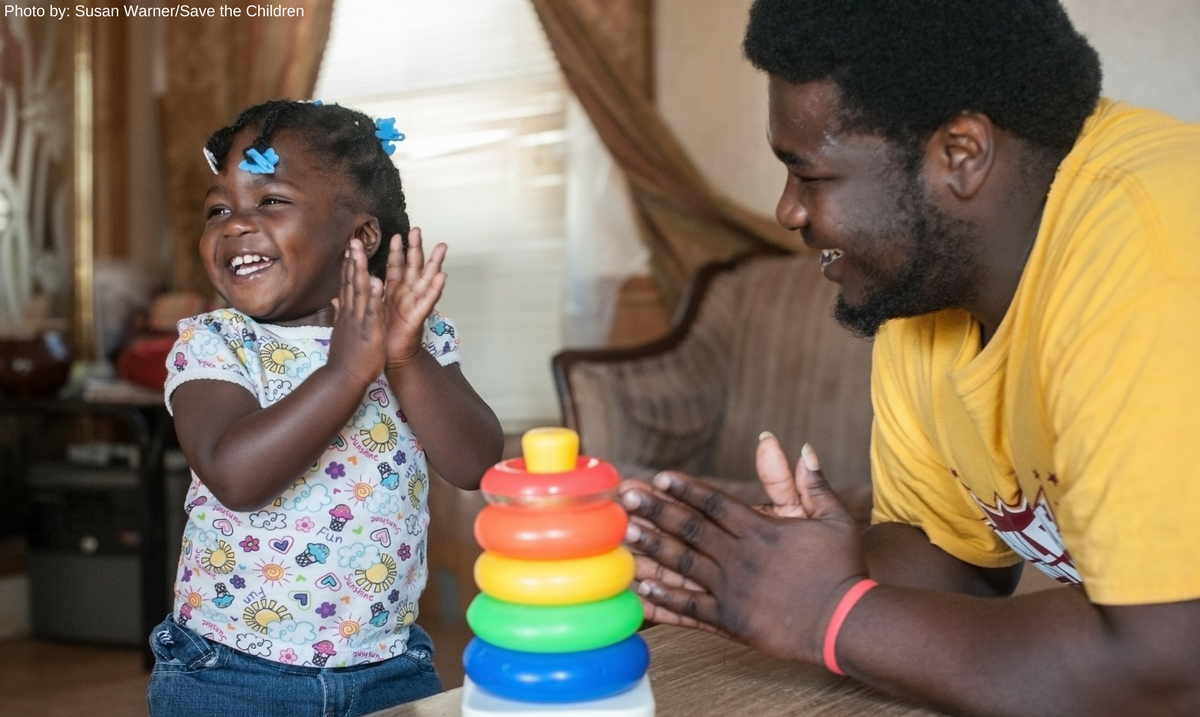
by Shavonne Clarke
Akeri is a jovial toddler whose smile lights up the room. She loves her dad so much. Their family has gone through some tough times, so she and her dad, Denzel, 21, have chosen to be regularly visited at their home by one of Save the Children’s early childhood coordinators who helps Denzel support his daughter’s development and makes sure that she’ll have a great future.
But what exactly is “home visiting,” and why is it so important?
According to the National Home Visiting Resource Center:
It connects parents-to-be and parents of young children with a designated support person who guides them through the early stages of raising a family. For many, it is a bridge to becoming the kind of parents they want to be so they can unlock their child’s potential.
It works like this: new and expecting parents are matched with a nurse, social worker or early childhood specialist who will come to their home or another location of the family’s choice. Home visitors get to know families and their needs over time, so their services could include anything from helping parents read to their kids to providing emotional support during stressful times.
Home visiting is a proven practice, with evidence-based programs in all 50 states and D.C. Evidence-based means that programs have met strict standards based on a history of successful work with families. In doing so, they become eligible for federal funding through the Maternal, Infant, and Early Childhood Home Visiting Program (MIECHV).
Home visiting programs are crucial because most of a child’s brain development happens during the first five years. Children’s early experiences with adults and learning are the foundation for the learning that happens later in life.
Studies have shown that high-quality early learning leads to better grades, a higher chance of staying in school and even a longer lifespan.
And it could help more than 18 million pregnant women and 23 million children lead happier, healthier lives. That’s about how many families there are in the United States with children under the age of five. Unfortunately, limited resources prevent most families who want help from home visiting, which has the potential to empower whole generations.
Akeri is fortunate. Denzel actively participates during the home visits and understands why beginning early matters. He enjoys sharing which stories his daughter has enjoyed during their nightly reading time with the coordinator.
But families like Akeri’s are at risk of losing out on this amazing opportunity. Congress is running out of time to renew MIECHV.
Urge Congress to Continue Effective Home Visiting Programs
Learn more about home visiting in your state in the 2017 Home Visiting Yearbook.